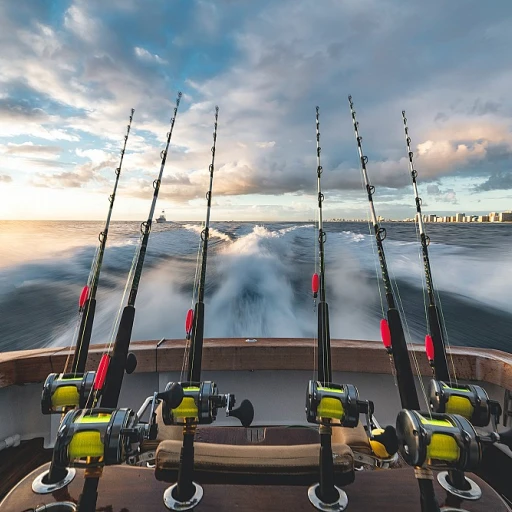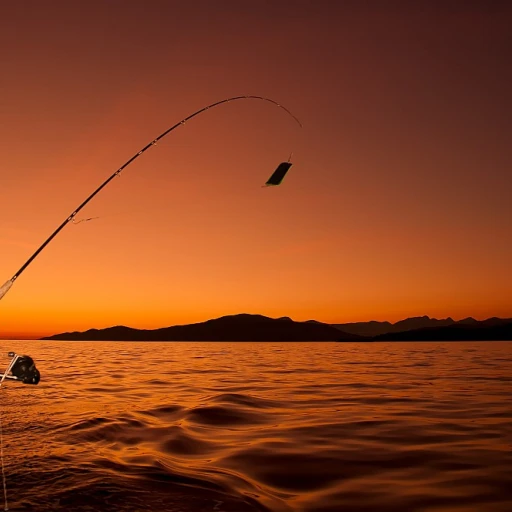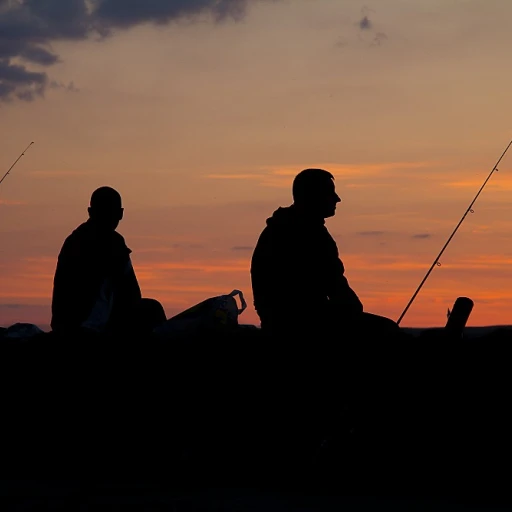
The history and tradition of pickling fish
A rich history in many cultures
Pickling fish isn't some new trend, it's a flavor-packed practice with roots dug deep into diverse cultures, from South Africa to Scandinavia. Historically, pickling was a genius method to preserve fish for those long winters or long voyages when refrigeration was a mere dream.For example, in South Africa, pickled fish, locally known as Kaapse Kerrievis, is traditionally served around Easter. It's a sweet and sour delight of onions, curry, and bay leaves, all soaked into the fish. It's a dish passed down through generations, holding a sentimental spot in many family meals.
In Norway and other northern European countries, pickling herring has been a staple for centuries. Imagine spending months at sea, battling icy waters, only to come home to the unmistakable tang of pickled herring awaiting you. This tradition underscores a community's resilience and resourcefulness.
Pickling fish also swims through the culinary traditions of Michigan's Upper Peninsula, where it's common to pickle northern pike caught in the cold freshwater lakes. There, families share time-honored recipes over wide mouth jars, ensuring the curing process is just right for that perfect bite.
But we're not just talking about nostalgia. The love for pickling fish is still going strong today with folks like Google LLC's Sherry Ronning, who explores how traditional South African pickled fish can coexist with modern Midwestern cuisine. The meticulous balance of flavors and the joy of preserving fish for extended periods continue to excite new generations of food aficionados.
If you're curious how these practices blend the past with the present, check out a related article on how legacy fishing techniques are outsmarting modern tech. It’s fascinating to see how time-tested methods still hold their ground in contemporary fish pickling.
Essential ingredients and tools for pickling fish
Gathering the essential ingredients and must-have tools
When it comes to making pickle fish, the first step is to gather all your essentials. This ensures a smooth, efficient pickling process. Without the right ingredients and tools, you'll find yourself hitting roadblocks.
Let's break it down. Key ingredients include fresh fish, with northern pike being a popular choice. Sherry Ronning, a renowned expert in Midwestern cuisine, swears by pike for its firm texture and ability to dissolve bones during the pickling.
Next, you'll need a solid pickling solution. This typically involves a mixture of white vinegar and water at a 1:1 ratio; a standard cup measurement works well. Salt is crucial – it aids the curing process, drawing out moisture from the fish. The general rule is about 1/2 cup of salt per quart of brine. Tweak to taste, but do not skimp on the salt!
In addition to vinegar and salt, you'll need some pickling spice. A mixed variety from McCormick works wonders. You can also find great choices on Amazon associate programs. They often include bay leaves, mustard seeds, and other spices that give the pickled fish its unique flavor. White onions add a sharp contrast and depth to the pickling mix.
Don't forget your storage needs! We recommend using wide-mouth jars to ensure easy layering and removal of the fish. Make sure to completely cover the fish with your pickling solution, giving it the best chance to soak up all that flavor. Layer your fish pieces neatly, adding a few slices of onions between layers.
Speaking of tools, a sharp knife is indispensable. It helps in cutting the fish into uniform pieces, ensuring even pickling. Use a clean cutting board to maintain hygiene – you don't want any cross-contamination. Accurate measuring cups and spoons guarantee your brine proportions are spot on.
These are the basics, but every chef has their twist. For a more exotic touch, Sherry Ronning sometimes adds a dash of oil and sauce. Embrace your creativity and adjust the recipe to your liking. Remember, a little personal flair goes a long way in perfecting your pickled fish recipe.
Want more on the nitty-gritty of perfect pickling? Check out unwrapped secrets: what are the time-honored lures still outfishing the tech-driven gear for some unexpected insights.
With all ingredients and tools at hand, you’re set for a delightful pickling experience. It’s about precision, patience, and, of course, the joy of tasting that perfectly cured fish.
Step-by-step guide to pickling northern pike
Gather your gear – essentials for pickling
To get started on your pickled northern pike journey, you’ll need a few essential ingredients and tools. Let's break down everything you need, so you can make sure you've got the basics covered.Ingredients: getting the right flavor
Your core ingredients will include fresh northern pike, white vinegar, water, salt, and sugar. But the magic really happens with the spices and add-ons. Popular choices include onions, bay leaves, garlic cloves, and Mccormick mixed pickling spice, which you can easily find on Amazon. Be sure to have these ready before you start.- Fish Add: Northern pike - the main star. Make sure it’s fresh and cleaned properly.
- Vinegar Solution: You'll need 4 cups of white vinegar for the pickling brine.
- Water: About 2 cups to dilute the vinegar and create the brine solution.
- Salt: Use around 1/3 cup of rock salt for curing the fish.
- Spices: 2 tablespoons of pickling spice and bay leaves for added flavor.
- Onions: Thinly sliced, they will add a delightful crunch.
- Sugar: Just a teaspoon to balance the acidity of the vinegar.
Tools: making the process smooth
Having the right tools makes all the difference in your pickling process. Here’s what you need:- Jars: Wide-mouth glass jars are ideal for easy filling and cleaning.
- Knives: A sharp fillet knife is crucial for cutting the pike into even pieces.
- Cutting Board: Ensure it’s clean and large enough to handle your fish safely.
- Measuring Cups and Spoons: Precision in measuring your ingredients is key.
- Mixing Bowls: For creating your brine solutions and mixing ingredients.
- Pot: For boiling your vinegar solution to dissolve the bones and meld flavors.
- Refrigerator: After preparing your pickled fish, you’ll need to refrigerate it for at least a couple of days.
Step-by-step process: Let's pickle this pike!
Now, let’s get into the nitty-gritty. Follow these precise steps to ensure your northern pike is perfectly pickled.- Prepare the Fish: Start by filleting your northern pike, removing any bones you can. You'll want to slice the fish into bite-sized pieces, about 1-2 inches each.
- Step Curing Process: Place the fish pieces in a bowl or deep dish, cover them with rock salt, and let it cure in the refrigerator for 24 hours. This draws out moisture and firms up the flesh.
- Rinse and Soak: After curing, rinse the fish thoroughly under cold water to remove excess salt, then soak the fish in a solution of 1 part white vinegar to 2 parts cold water for an hour.
- Prepare the Brine: While the fish is soaking, mix your brine by boiling water, white vinegar, sugar, and pickling spice in a pot. Allow it to cool completely.
- Layer the Fish: In your jars, alternately layer the fish pieces and onion slices. Add a bay leaf in each jar for extra flavor.
- Add the Brine: Pour the cooled brine over the layered fish and onions, making sure completely cover the fish. Seal the jars tightly.
- Refrigeration: Refrigerate the jars for at least 3 days before tasting. The fish will be ready for eating after sitting for days.
Expert tips: beyond basics
For a twist, try adding different spices like dill or mustard seeds. South African pickled fish often includes turmeric and curry powder for a unique flavor. As suggested by Sherry Ronning, you can even integrate some oil for a richer texture. Storing your pickled pike airtight in the fridge can extend its shelf life up to two to three weeks. In the world of fish pickling, perfection comes with patience and precision, and a good sprinkle of creativity. So grab your gear, follow these steps, and get ready to enjoy some delicious pickled northern pike! For further inquiries or to engage with more fish enthusiasts, visit uncovering the giants of the water.The science behind pickling: how it works
How the basic elements interact in creating pickled goodness
Ever wondered what happens when you dunk a northern pike into a briny solution for days? The magic of pickling lies in simple chemistry. Vinegar, salt, and time work together to transform raw fish into a tangy, delectable treat.
How vinegar and salt play a part
The combo of vinegar and salt forms the backbone of your pickling solution. White vinegar (usually 5% acidity) is a popular choice among picklers. Fun fact: the McCormick mixed pickling spice on Amazon can give your brine a zesty twist!
The salt’s role
The salt doesn’t just add flavor; it draws moisture out of the fish while dissolving bones. This process firms up the fish and makes it much easier to slice and serve. So, yes, if you spot that layer of salt during the curing process, it’s a good thing!
Pickling spice mix
The spices you add to the brine are more than just for flavor. They interact with the fish and solution, helping to create that authentic pickled pike taste. Traditional South African recipes often include bay leaves and other exotic spices, while Midwestern cuisine might stick to peppercorns and mustard seeds.
Temperature and timing
Temperature plays a crucial role, too. During the step-by-step curing process, it's essential to maintain a cool environment. That's why we refrigerate for those critical days. The cold water ensures the internal environment remains conducive for the brine to work its magic.
How different ingredients contribute
While vinegar and salt are the stars, other components like onions, oil, and the fish itself each contribute uniquely to the final product. For instance, onions release sugars as they pickle, adding a hint of sweetness to balance the tanginess.
South african and other regional specialities
In South Africa, pickled fish, often made with pike or other white fish, is a festive delight during Easter. Recipes might differ, but the Czech fish recipe often includes layers of fish and onions in a jar covered with a vinegar-salt solution. It’s essential to ensure the fish is completely submerged, or in other words, make sure to completely cover the jar for the best results!
Expert tips and tricks for perfect pickled fish
Storage temperature
The temperature at which you store your pickled fish can significantly impact the final product. Research indicates that storing pickled fish at lower temperatures, around 40°F (4°C), can help maintain the texture and quality of the fish. According to Sherry Ronning, a renowned expert in Midwestern cuisine, keeping pickled pike in a consistently cool environment is crucial to ensure the fish remains flavorful and safe to consume. She mentions that any fluctuations in temperature can disrupt the curing process and may lead to spoilage. Ronning’s tip: always keep your refrigerator set to a consistent temperature.
Brine consistency
The consistency of the brine is another key factor for perfect pickled fish. A study conducted by food scientists in Michigan found that the ideal brine for pickling fish should have a salt concentration of around 5-6%. This concentration is effective for dissolving bones and ensuring the fish is fully cured. For instance, using a consistent mixture of 2 cups of white vinegar, 1 cup of water, and 1 cup of salt can create the perfect pickling solution. Ensuring a consistent brine helps achieve uniformity in flavor and texture, making sure the fish is perfectly pickled every time.
Layering techniques
How you layer the fish in the jar can affect the pickling process. Experts recommend layering fish with spices and onions to allow the flavors to permeate thoroughly. McCormick mixed pickling spice is a popular choice for many home picklers. By alternating layers of fish and spices, and making sure to cover the fish completely with brine, you’ll ensure even flavor distribution. This method is championed by traditionalists from South Africa to Kansas, emphasizing the importance of tradition in the fish pickling process.
Choosing the right container
Picking the right container is also hugely important. Wide mouth jars are often recommended to both facilitate layering and for ease of access when adding or removing fish. Wide mouth jars also help ensure that the fish remains fully submerged in the brine. An Amazon Associate highlights that using high-quality glass jars can improve the shelf life of your pickled pike by preventing any contamination or chemical interactions that might spoil the fish.
Monitoring curing time
Timing the curing process can make or break your pickling efforts. On average, pickling experts agree that northern pike requires at least 5-7 days to properly cure in the brine. Bay leaves may be added during this time to enhance the aromatic profile. During these days, regularly check that the fish remains fully submerged in the brine. Google LLC points out that monitoring the curing time closely and adjusting as needed based on the size and thickness of the fish can lead to consistently delicious results.
Exploring different pickling recipes and variations
A taste of tradition from South Africa
South African pickled fish, known as 'curried fish', is a delectable delight often enjoyed during Easter. This dish typically features Cape Malay influences and uses a variety of firm white fish like hake or yellowtail. The fish is first fried and then layered with onions and basic spices before being pickled in a mixture of vinegar, oil, curry powder, and turmeric. This pickled fish recipe brings a unique, tangy flavor that's hard to resist.
Kerala fish pickle: a spiced symphony
From the sunny shores of Kerala, India, comes a beautifully spiced variation of fish pickle. Often made with kingfish, known as 'surmai', this recipe fuses aromatic spices like mustard seeds, fenugreek, and red chili powder in a white vinegar solution. The fish is usually marinated and fried before being added to the spiced vinegar mixture. A few bay leaves add a complexity to this spiced delight.
Northern pike: a midwestern specialty
In the Midwest, particularly in states like Michigan and Kansas, northern pike is a popular choice for pickling. This fish, known for its tough bones, benefits from the pickling process as it helps to soften the bones. A typical pickling solution here involves a cup of white vinegar, water, salt, sugar, and pickling spice – often McCormick mixed pickling spice. Expert Sherry Ronning suggests adding a bit of oil to help dissolve the bones entirely, ensuring a more enjoyable eating experience.
Modern twists on classic recipes
As much as traditional recipes hold their ground, modern variations are gaining traction. Recipes might mix things up by adding a touch of sweetness like honey or making the brine with apple cider vinegar instead of white vinegar. Some even introduce slices of jalapenos for an unexpected spicy kick. These pickling solutions open up a realm of possibilities, making sure there's a recipe for every palate.
Personal stories from the community
Sherry Ronning, a seasoned angler based in Kansas, shared her experience of the pickling process with us. She emphasizes the importance of making sure the fish is completely covered in the brine and refrigerating it for the right number of days – typically about 5 to 7 days. "It's an art and a patience game," she says, "but when you get it right, it's worth every minute." Another memorable mention includes a South African family who prepares large jars of pickled fish for their Easter celebration, a tradition passed down for generations.
Storing and serving pickled fish
Choosing the right storage containers
When storing your pickled fish, the container matters a ton. Wide mouth glass jars are a classic choice, allowing you to easily layer fish and pack all the goodness in without a mess. Sherry Ronning and other experts agree that glass is your go-to for preserving the taste and preventing any unwanted reactions. Make sure the jars are sterilized beforehand to avoid contamination.
Proper refrigeration time
After sealing your fish in the pickling solution, it's crucial to refrigerate for at least 7-10 days. This ensures the flavors meld together beautifully. The salt, vinegar, and other spices have time to work their magic. Many aficionados suggest letting it sit up to two weeks for a fuller flavor profile. Remember, the fish is ready sitting in your fridge for days pickled to perfection.
Maintaining optimal temperatures
Pickled fish needs to be kept at a consistent, cool temperature. The ideal range is between 34-40°F (1-4°C). Too warm, and you're risking spoilage; too cold, and you might freeze your delicate fish. A bit of attention here can go a long way in guaranteeing the taste and texture we're after.
Avoiding exposure to light
Light can accelerate the degradation of your pickled fish. Keeping your jars in a dark fridge or covering them with a cloth can help maintain their quality. This isn’t just a tip from your grandma—science backs it up!
Labeling for clarity
Always label your jars with the preparation date. This might seem trivial but trust me, it's a lifesaver. You wouldn't want to mix up your freshly pickled batch with one that's been sitting for months. Proper labeling also ensures food safety and helps you track the curing process.
Serving suggestions and ideas
When it comes to eating pickled fish, the fun is endless. It makes a fantastic addition to salads or as a topping on crackers with a bit of cream cheese. You can even toss it into pasta or use it in a South African-inspired recipe for a twist. The pickle fish experience is truly global—from traditional dishes in South Africa or Kerala to innovative takes closer to home.
Avoiding common storage pitfalls
One of the most common mistakes people make is inadequate sealing of the jars. This allows air in, which can spoil the fish. Always make sure to completely cover the jar and secure the lid tightly. Also, avoid using old or damaged lids, as they might not seal properly. Another pitfall is not using enough brine—make sure your fish add completely submerged in the pickling solution to ensure even curing.
All these tips are crafted to make sure your journey into pickling fish isn't just satisfying but also safe and delicious. Happy pickling!
Case studies: success stories and common pitfalls
Real-life success stories and cautionary tales
When it comes to pickling fish, nothing beats learning from real-life examples. Over time, many anglers and enthusiasts have perfected their pickled fish recipes and processes, while others have encountered pitfalls. Let's dive into some intriguing case studies to glean insights and avoid common missteps.
The Famed Ronning’s Recipe
Sherry Ronning from Michigan is a name that comes up often in the pickling community. Ronning, known for her exceptional northern pike pickling, shared, “The key to a successful pickle is patience and precision. It took me numerous tries, adjusting the bay leaves, vinegar concentration, and pickling spice proportions until I found the right balance.” Ronning's family recipe calls for layering the fish with onions and using a mix of white vinegar and cold water for the brine. Having a wide-mouth jar is essential to make sure you can completely cover the jar refrigerate it properly.
Midwestern Cautionary Tale
One Midwestern fisherman shared his less-than-successful experience, which serves as a good learning point. He skipped the crucial step in the curing process—instead of letting his fish sit for seven days in a salt vinegar solution, he cut it short to three days. “I thought I could speed things up, but the fish just didn't have the right texture and taste. It taught me that time is everything when it comes to pickling,” he shared. His story is a reminder that speeding up the curing time minutes can lead to a softer, mushy product.
South African Pickled Success
In South Africa, pickling has evolved into a culinary art. One home chef from Kerala proudly talks about his traditional south African pickled fish recipe. “Our pickled fish ready for eating after sitting for three days. We use a unique blend of pickling spices that include bay leaves, and we make sure to use white vinegar cups for a tangy delight,” he stated. His recipe emphasizes the use of high-quality Mccormick mixed pickling spice and patient brining in a salt water solution.
Michigan’s Master Pickler
Another inspiring story comes from a Michigan native who embraced the traditional techniques of fish pickling. “To get the perfect consistency, I learned to dissolve bones using a mixture of vinegar and water, allowing them to sit for specific days,” she explains. Her pickled pike recipe has garnered quite a following in the local community.
The art of pickling fish, whether for culinary enjoyment or as a method of preservation, combines science with age-old techniques. Whether you're aiming to prepare a classic pickled fish recipe or venturing into variations like South African flavors, understanding and learning from both successes and failures can lead to delicious outcomes.

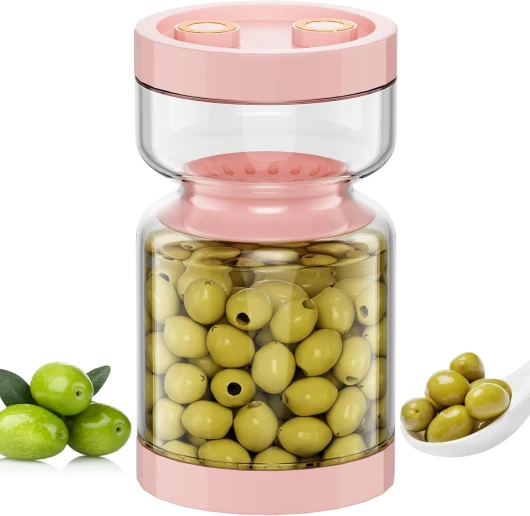

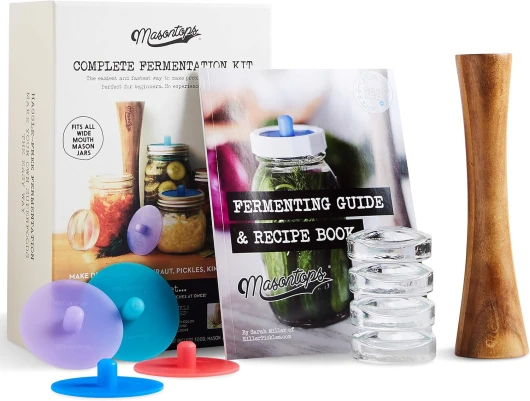
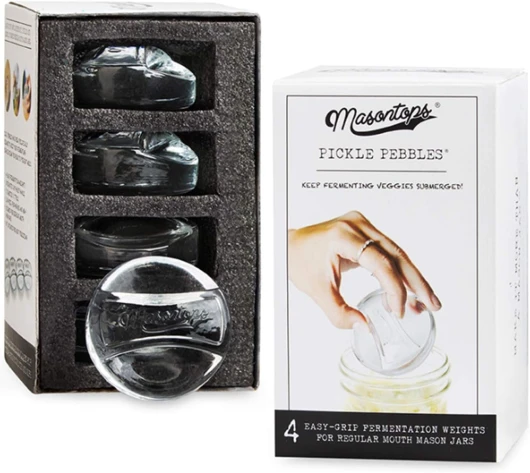
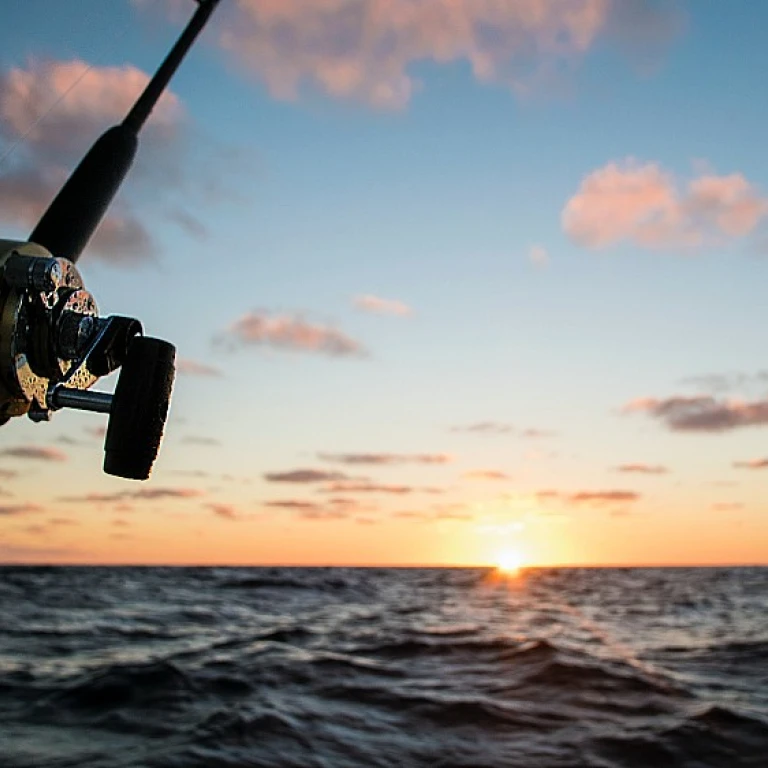



-large-teaser.webp)
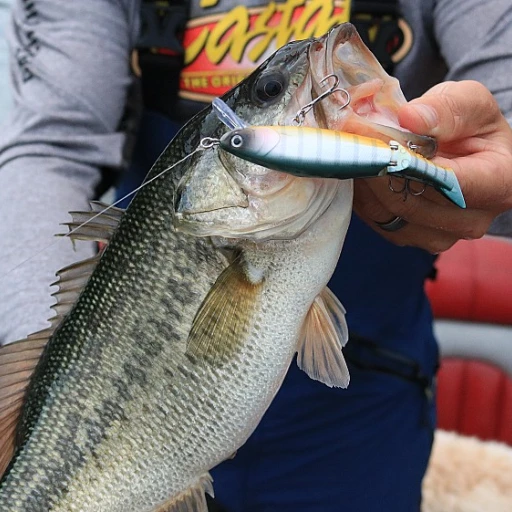
-large-teaser.webp)


